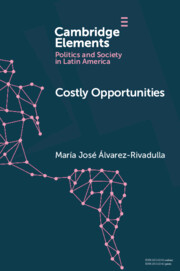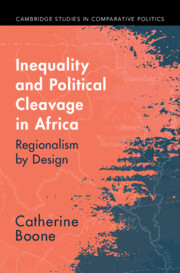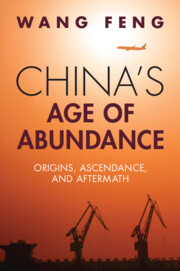651 results
9 - Society and Health Inequalities
-
-
- Book:
- The Conservative Effect, 2010–2024
- Print publication:
- 27 June 2024, pp 284-325
-
- Chapter
- Export citation
Labour market exit routes in high- and low-educated older workers before and after social insurance and retirement policy reforms in Sweden
-
- Journal:
- Ageing & Society , First View
- Published online by Cambridge University Press:
- 31 May 2024, pp. 1-20
-
- Article
-
- You have access
- Open access
- HTML
- Export citation
1 - Introduction
-
- Book:
- Artificial Intelligence
- Published online:
- 23 May 2024
- Print publication:
- 30 May 2024, pp 1-21
-
- Chapter
- Export citation
5 - Artificial Intelligence, Growth, and Inequality
-
- Book:
- Artificial Intelligence
- Published online:
- 23 May 2024
- Print publication:
- 30 May 2024, pp 107-172
-
- Chapter
- Export citation
Socioeconomic gradient in functional difficulties by domain among youth: evidence from Egypt
-
- Journal:
- Journal of Biosocial Science , First View
- Published online by Cambridge University Press:
- 07 May 2024, pp. 1-16
-
- Article
- Export citation

Costly Opportunities
- Social Mobility in Segregated Societies
-
- Published online:
- 01 May 2024
- Print publication:
- 30 May 2024
-
- Element
- Export citation
6 - Territorial Oppositions in African Politics
-
- Book:
- Inequality and Political Cleavage in Africa
- Published online:
- 18 April 2024
- Print publication:
- 25 April 2024, pp 168-194
-
- Chapter
- Export citation
8 - Conclusion
-
- Book:
- Inequality and Political Cleavage in Africa
- Published online:
- 18 April 2024
- Print publication:
- 25 April 2024, pp 223-242
-
- Chapter
- Export citation
2 - Region and Regionalism in African Politics
-
- Book:
- Inequality and Political Cleavage in Africa
- Published online:
- 18 April 2024
- Print publication:
- 25 April 2024, pp 25-47
-
- Chapter
- Export citation
1 - Economic Inequalities and Territorial Oppositions in African Politics
-
- Book:
- Inequality and Political Cleavage in Africa
- Published online:
- 18 April 2024
- Print publication:
- 25 April 2024, pp 1-24
-
- Chapter
- Export citation
Equality, Subordination, and Methodology in Discrimination Theory: A Reply to Critics
-
- Journal:
- Dialogue: Canadian Philosophical Review / Revue canadienne de philosophie / Volume 63 / Issue 1 / April 2024
- Published online by Cambridge University Press:
- 23 April 2024, pp. 95-117
-
- Article
-
- You have access
- Open access
- HTML
- Export citation

Inequality and Political Cleavage in Africa
- Regionalism by Design
-
- Published online:
- 18 April 2024
- Print publication:
- 25 April 2024
5 - Two Paths
-
- Book:
- China's Age of Abundance
- Published online:
- 28 March 2024
- Print publication:
- 04 April 2024, pp 137-167
-
- Chapter
- Export citation
2 - The Legal and Philosophical Dichotomy between Land and Property
- from Part I - The Rights and Wrongs of South African Property Law
-
-
- Book:
- Beyond Expropriation Without Compensation
- Published online:
- 28 March 2024
- Print publication:
- 04 April 2024, pp 55-70
-
- Chapter
-
- You have access
- Open access
- HTML
- Export citation
11 - Redistributive Justice, Transformational Taxes and the Legacies of Apartheid
- from Part III - Imagining Alternative Futures of Redistributive Justice in South Africa
-
-
- Book:
- Beyond Expropriation Without Compensation
- Published online:
- 28 March 2024
- Print publication:
- 04 April 2024, pp 268-287
-
- Chapter
-
- You have access
- Open access
- HTML
- Export citation
7 - Aftermath
-
- Book:
- China's Age of Abundance
- Published online:
- 28 March 2024
- Print publication:
- 04 April 2024, pp 202-239
-
- Chapter
- Export citation
People Like Us? How Mass Preferences Are Shaped by Economic Inequality and Racial Diversity
-
- Journal:
- State Politics & Policy Quarterly / Volume 24 / Issue 2 / June 2024
- Published online by Cambridge University Press:
- 03 April 2024, pp. 167-206
- Print publication:
- June 2024
-
- Article
-
- You have access
- Open access
- HTML
- Export citation

China's Age of Abundance
- Origins, Ascendance, and Aftermath
-
- Published online:
- 28 March 2024
- Print publication:
- 04 April 2024
Contributions to inclusive and impactful development and psychopathology science: interrogating ecology-linked vulnerability and resilience opportunities
-
- Journal:
- Development and Psychopathology , First View
- Published online by Cambridge University Press:
- 25 March 2024, pp. 1-16
-
- Article
-
- You have access
- Open access
- HTML
- Export citation
8 - Political Organization
-
-
- Book:
- Human Behavioral Ecology
- Published online:
- 07 March 2024
- Print publication:
- 14 March 2024, pp 180-202
-
- Chapter
- Export citation



